Introduction
If you know anything about running, then you know just how important it is to have a good pair of comfortable running shoes on your feet. Of course, finding a shoe that fits well and that feels comfortable with your regular stride isn’t always easy.
So, we’ve put together this handy guide that will help you pick out the correct running shoes for you. We’re going to give you a breakdown of what exactly makes a running shoe suitable and what you should be looking for in your first or next pair.
Looking for something specific? Choose one of the options below.
- Best Running Shoes For 2023 Compared And Reviewed
- See Top Running Shoe Brands
- Check Running Shoe Brand Comparisons
- Need running shoes for a specific foot type or purpose? Read this
- Helpful Topics On Running Shoes
Understanding the Parts of a Running Shoe
As you may know, there are various components that make up a running shoe and understanding what these components are and how they form part of the whole can make you more savvy when it comes to identifying good and bad shoes. All of these components make up the performance of a running shoe.
The Upper
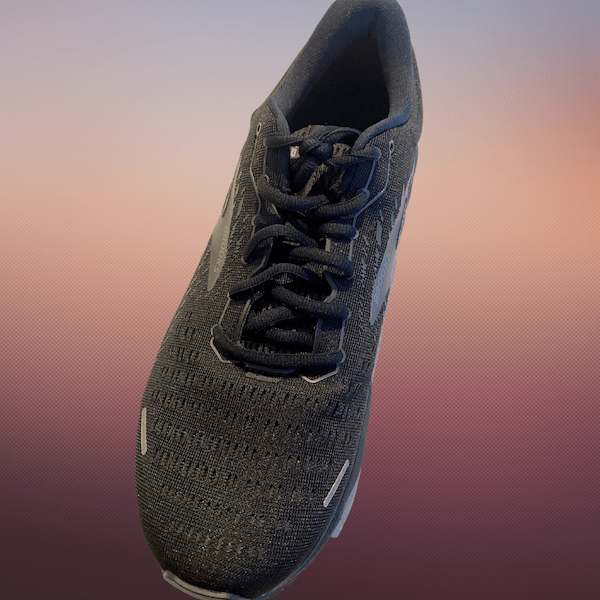
The upper refers to everything above the sole of the shoe. It is generally made with layers of mesh and fabrics sewn together, though modern shoes use 3D printing and knitting to create one-piece uppers which support and stretch in all the right places.
You should pick the shoe with an upper that fits the shape of your foot and is smooth to the touch. You shouldn’t feel any chafing or binding anywhere.
Collar/Ankle
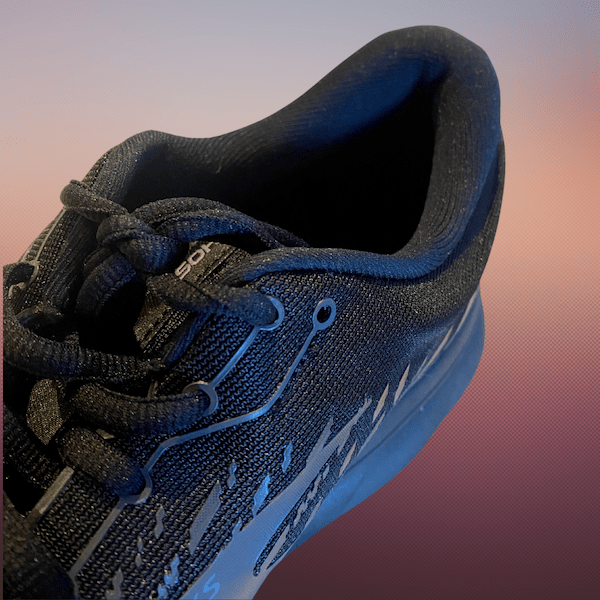
This is the wrap at the top of the opening of the shoe and is responsible for holding the heel in place. Some shoes make use of thicker padding, while others rely more on the shape. Be sure to pay attention to the way the padding interacts with your ankles and if your heel slips. The curve on the back should not irritate your Achilles tendon.
Learn more about heel slippage and how to adjust your running shoes to avoid this.
Outsole

The outsole is the part of the shoe that touches the ground and is generally made from a number of foam or rubber compounds placed in planned areas to enhance bounce and flexibility or increase the shoe’s wear life. It would be best if you looked for materials that offer durability and traction while not adding to the shoe’s weight and making it stiff.
The footprint shape should match that of your foot and provide you with a good, stable feeling underfoot.
Midsole
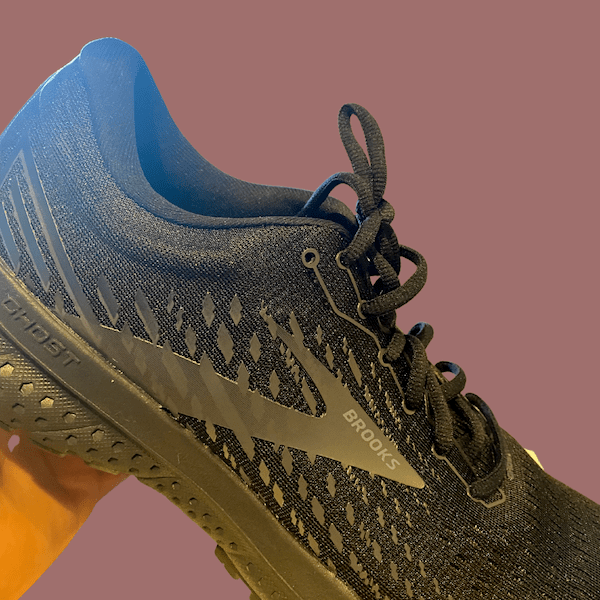
The midsole is the foam material that is found between the upper and the outsole and is meant to guide your foot through your stride and cushion your feet from impacts. You should aim for a midsole material and density that feels good when running – neither too firm nor soft and without excess weight.
Toebox
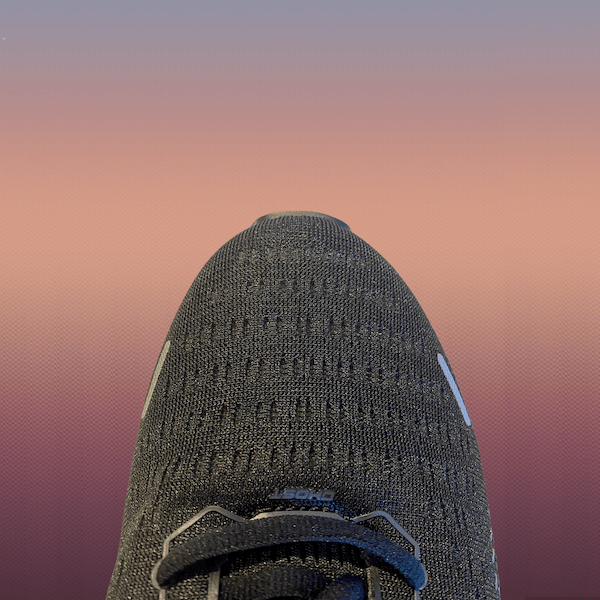
The toebox is all of the upper from the end of the shoe to the front of the eyelets. It is often capped with a reinforced toe bumper that keeps the fabric off of your toes and protects against stubbing – this is especially prevalent in trail shoes.
The toebox should stay out of your way and allow your foot to spread out and flex naturally. You shouldn’t experience any toe rubbing or binding in the shoes.
Saddle
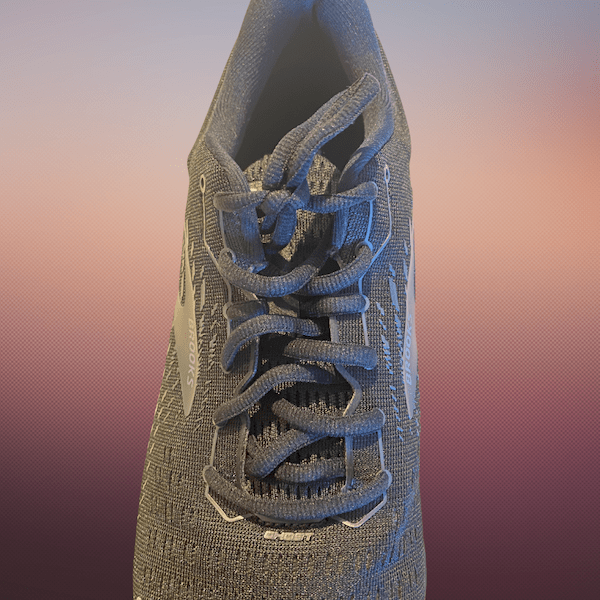
The saddle is the reinforced area around your instep – the arch of your foot between the ankle and the ball – that interacts with the laces to securely hold the shoe on your foot. There are plenty of eyelets, overlays, and lacing systems out there that mold the saddle closely to many different foot shapes.
Read more about how to effectively lace your running shoes.
Pay close attention to the way that the saddle holds and fits your foot. It should offer a snug feeling with no slippage while also allowing for the natural doming of the arch during your stride.
Heel Counter

This is a semi-rigid cup that is layered inside of the rearfoot and is responsible for supporting your heel. Some running shoes will have an external heel wrap that serves a similar purpose, while other shoes that are more minimalist will not have a heel counter to accommodate a freer range of movement.
Heel counters don’t really provide motion control, though they are able to center the heel for more support and stable landings.
Heel to Toe Drop
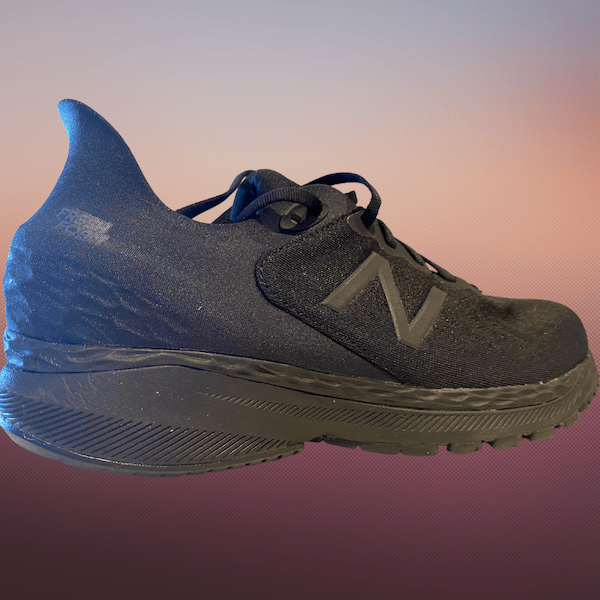
The heel to toe drop refers to the difference in height between the ball of your foot and your heel when you are standing in a pair of running shoes. There is much debate around the significance of drop related to injuries, though experts agree that changing the drop distributes force differently to the leg and foot and can also influence your stride.
Running shoes should feel good throughout your stride and should also reduce stress on the weaker parts of your feet.
Heel Cushioning
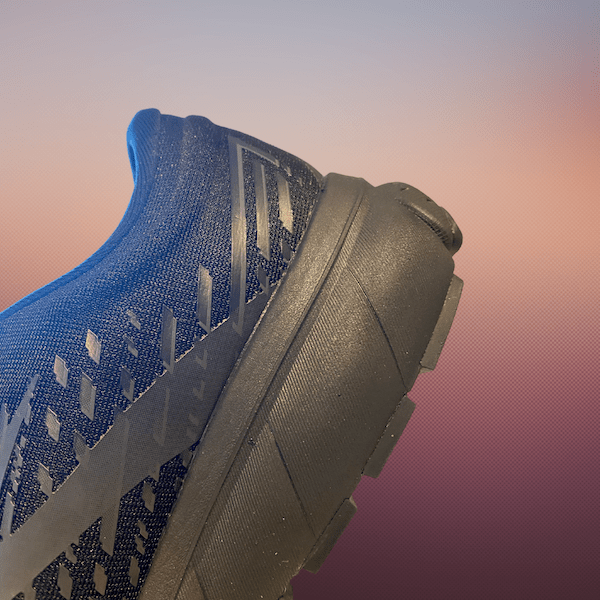
Heel cushioning refers to the midsole material and is designed to reduce the impact shock of striking your heels. Other than using a range of cushioning materials, some shoes come with a softer ‘crash pad’ area on the foot’s outer edge or a rounded outer heel to make your landings smoother.
Try to find a shoe that has a balance between ground feel, stability, and cushioning. Also, pay attention to whether the shoe touches down where you would expect it to.
Forefoot Cushioning
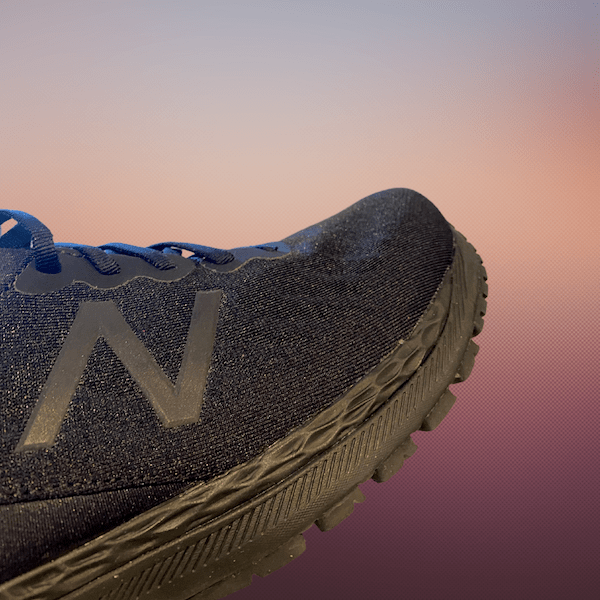
Like heel cushioning, forefoot cushioning is the midsole material and is meant to mitigate the impact of your heaviest stride forces that happen during push-off and forefoot loading. Forefoot shoe cushioning protects your foot structure, and some materials are not only able to protect the feet but propel them as well, providing you with more energy.
Learn more about impact absorption with running shoes.
Grooves & Toe Springs
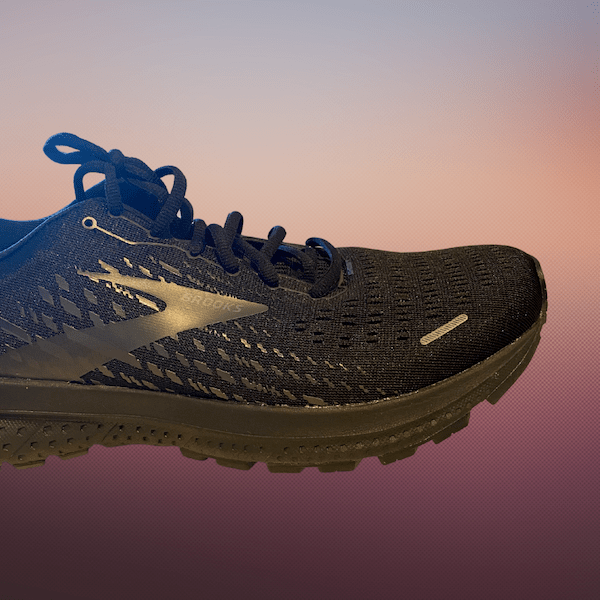
These parts are there to allow the shoe to bend the way that your foot bends. Cutting the midsole away or turning the toe up lets the foot roll through the stride, and small differences in angle or placement can completely change the feel and mechanics.
The degree of flex that works best with your stride is going to depend on how fast you run, but a general rule of thumb is that you should find a shoe that rolls and flexes the way your feet want to move. Also, take your pace into consideration.
Find out more about how a running shoe works, and how they aid you to better your stride.
Understanding Your Personal Foot Type & Gait
You’ll have a much easier time picking out a good pair of running shoes if you know and understand your personal foot type and gait. Let’s take a look at these two concepts and explore what they mean.
Foot Type: Low Arch, Normal Arch, High Arch

The easiest way to determine the type of foot you have is to take the ‘west test’, which involves wetting both of your feet and standing on a flat surface – preferably on cement or bricks in the shade so that the water doesn’t evaporate – for 10 seconds.
When the 10 seconds are up, you can step away and take a look at the imprint your feet made on the surface.
You’ll know you have a normal arch if you see a distinct curve along the inside of your foot, with a band a little less than half the width of your foot connecting the toe and heel.
If you have a high arch, you will see a very apparent curve along the inside of your foot and a very thin band connecting your toe and heel. If your arch is particularly high, you might see no connection between the toe and heel.
You have a low arch if the imprint shows most of your foot, and you don’t see much of a curve along the inside of your foot. You can experience foot pain if you aren’t wearing the correct running shoes for your style runners gait.
Gait: Underpronation, Normal Pronation, Overpronation
Now that you’ve determined your arch height, you can use it to determine the type of gait you have. Gait is just a fancy way of referring to the way that your feet behave when you run. However, it is an important aspect to know because you are going to want a shoe that accommodates your gait type the best.
There are three main kinds of gait types. Let’s take a look at them.

Underpronation
Also called supination, an underpronator will strike the ground with the outer part of their heel first, rather than rolling inward, and they will stay on the outside of their foot throughout the strike. This reduces the foot’s ability to absorb impact and is seen in people with higher foot arches.
If you are under pronating, you should choose a neutral shoe cushioning.
If you’re an underpronator, you may want to check to see if supination running shoes are suitable for you.
Normal Pronation
If your gait is neutral, your heel’s middle and outer parts will strike first, and your foot will roll slightly inward to absorb the shock. If you have a neutral gait, you will likely have a normal arch, and you should look for running shoes with neutral cushioning.
Overpronation
Overpronation is when the outside of the heel strikes the ground first, followed by the foot rolling slightly inward to absorb the shock. Those with low and medium arches are generally overpronators and should choose shoes that are designed for stability.
Choosing the Right Running Shoes for You
With all of the above information, you should be set to find out which type of running shoes are best suited for you. We’re going to discuss how you can go about choosing the shoe that fits you perfectly.
Stability Shoes
Like we mentioned earlier, if you pronate, your feet roll inward as you move, or you supinate, your feet roll outward as you move, then you are going to want to don a pair of stability running shoes. The excess movement that is associated with these kinds of pronation is not necessarily a bad thing but is an important aspect to remember when you are on the market for a new pair of kicks.
Stability shoes incorporate varying foam densities, medial posts, and other technologies that are designed to guide your feet along a more neutral motion path. This helps remove any potential strain from your hips and knees, which can help your joints and muscles stay healthier for longer as you run.
Neutral Shoes
Neutral running shoes are made to distribute weight evenly down the shoes’ center and will generally accommodate medium-height arches. If you notice that the wear pattern on your previous pair of runners is centered on the ball of the foot and the heel, you should consider shoes that provide neutral support.
These kinds of shoes don’t include the additional support that comes with stability shoes, but they rather focus on absorbing shock to help you rack up the miles in comfort.
Find out more about how a running shoe should feel when you try it on.
Where Do You Plan to Run?
While your body plays an important role in determining which shoes are best for you, you also have to consider the environment you will be spending most of your time running in. Some shoes are made specifically for the road, while others are better suited to gravel and trails.
Road Running Shoes
The road is very likely the hardest surface that you are ever going to run on and is by far the most common running surface in the world. There are roads everywhere, and if you are doing running as a general hobby to help you stay in shape, you’re probably running on the roads in your neighborhood.
Traction is not an important factor when running on asphalt and roads, so you shouldn’t worry too much about grip and should instead focus on getting a pair of shoes that offers greater cushioning. Softer cushioning will absorb some of the impacts that come with running, which will help you get a smoother ride.
Cushioned running shoes also help protect you against some of the more common running injuries out there.
Trail Running Shoes
Trail running can offer so much more than running on roads – you’re away from traffic, out in the fresh air, and you get to run on a variety of different surfaces that makes each running session unique and pleasant. The nature of running on trails is such that you are inevitably going to run on hills as well, so when it comes to exercise, you’re getting a better overall workout.
Trails have a good level of hardness and just the right amount of leeway, preventing some common running injuries like IT band syndrome and plantar fasciitis. However, wearing the wrong shoes can actually increase your likelihood of getting these injuries!
Cross-Training Shoes
Cross-training shoes are specially designed for – as the name suggests – cross-training, or gym workouts, and any balance activity where you need to have more contact with the ground than a thick-soled shoe can provide you with. They are more suitable for running on treadmills and such and might not last as long if you were to take them outside regularly.
Note that this shouldn’t be confused for cross country running shoes.
Try & Test Running Shoes At a Local Run Store to Be Sure
If you are able to, we strongly suggest that you go into your local run store to try on running shoes. Buying a new pair of shoes online is certainly more convenient, but even when you know everything there is to know about your feet, you can’t be 100% sure that the shoes you’re buying are going to work for you.
When you go into a run store, you can ask the attendants to help you pick out a shoe that suits you perfectly. They are trained to know about different kinds of shoes, feet, and runners and will be able to help you find a few pairs that will work best for you.
Better yet, you’ll be able to try on several pairs in the store to find one that is comfortable and fits perfectly.
This can be super beneficial if you are unsure about what kind of shoes you should be wearing, and especially if you aren’t clued up about all of the different shoe brands.
Running Shoe Brands
When looking for the right running shoe, you will undoubtedly come across some of the most popular running shoe brands used by millions of runners. Just to name a few are listed below, you can click through to each one to find more about each brand and some of their most popular running shoes in recent times..
Tips When Looking For New Running Shoes
- Try both shoes on: One fact that not many new runners know is that some pairs of running shoes have a shoe that is larger in the feet than the other. This is generally to accommodate people who have mismatched foot sizes but can also be due to a packaging or manufacturing error. If you don’t have mismatched feet, you need to make sure that the shoes you are buying are the same size and feel the same on both feet.
- Beware of brand fits: Different brands are going to use different sizings for their shoes, and a size 8 from Nike might not be the same size as a size 8 from Adidas. For this reason, we suggest that you try on a pair of shoes in-store with a running professional. They’ll be able to tell you how the different sizings relate to each other and whether or not two brands use the same sizings.
- Leave a thumb’s width in front of your toe: You want to have as much breathing room for your toes as possible so that they do not scratch or chafe against the inside of the shoe. A thumb’s width between the ends of your toes and the front of the insole is a good rule of thumb (pun intended) and will ensure that your toes have room to move around. Of course, you want to make sure that the rest of the shoe fits snugly around your feet.
- Avoid shoes that are too small: While it is true that you want your running shoes to have a snug fit to prevent ankle rolling and other injuries, you need to avoid buying and running in a pair of shoes that is too small for you, even by one size. Doing so is going to cause a world of problems, from blisters to injuries and just general pain.
- Don’t assume your size: By now, you probably know a general estimate for your shoe size, but you never want to assume, especially not when it comes to running shoes. If you aren’t totally sure of your shoe size, you should consider going into a running store and asking a professional to help you determine what size your feet are. Your foot size won’t really change throughout the course of your life, so once you know exactly what size you are, you’ll be set for life.
Frequently-Asked Questions On Running Shoes
Pronation is your foot’s natural movement as it happens during the foot impact when you are walking or running. It is a core part of your body’s natural movement but is different from person to person. Your foot rolls inward to absorb shock as it strikes the ground, and as it does, the arch of your foot will support three times your body weight. Pronation is an important aspect of finding your perfect pair of running shoes.
Also called a heel-toe drop, offset is the difference in the amount of material under the forefoot of a shoe and the amount of material beneath its heel. For instance, a shoe that has 20mm of material under its forefoot and 25mm of material beneath its heel would have a 6mm heel-toe drop. Most running shoes have more material beneath the heel so that they can better absorb the shock of impacting as you run.
Stack height is a measurement of the total amount of material on a shoe that separates the ground from your foot. It is generally expressed in two figures. The first represents the stack height in the heel, and the second refers to the forefoot’s stack height. Running shoes will usually have a slightly higher stack height in the heel than in the forefoot so that they can better absorb the shock of your footfalls.
In general, you should always try on a pair of running shoes before you purchase them, but when you’re buying online, you don’t really have that option. If you can, you should try to find a local running store that has the shoes you’re looking for, and try them on there. That way, you’ll not only be getting an idea of exactly how the shoes are going to perform when you’re running with them, but you also won’t have to pay for any additional shipping fees.
One thing that you should always try to bring to the running store when you’re buying new shoes is your old pair of runners! The attendants at the store will examine the wear on your old kicks and help you find a pair that will suit your running style, gait, and pronation. All things that they can determine just by looking at your old, worn-out pair of shoes.
The short answer: it depends. The less aggressive trail running shoe models work quite well for running on the road and can be used on both mediums without much trouble. You can use your trail running shoes for road running as long as they offer plenty of support for your feet on the harder – much harder – surfaces of the asphalt. If they don’t, then don’t bother with them on the roads.
Road running shoes generally come with much more cushioning and impact-absorption than their trail running counterparts since they are designed to protect your feet and legs from the ample shock that comes from repeatedly impacting on hard asphalt. Because of this, they can certainly be used for running trails since trails usually have softer surfaces and are not as hard on your feet. So yes, you can use your road running shoes for trails.
As a general rule, you should start thinking about changing your running shoes after every 300 to 500 miles that you run since they will likely show signs of some rough wear and tear at that point. However, if they are not showing any signs of excessive wear, you could probably get away with wearing them for longer without increasing your risk of injury.
Inexpensive shoes are rarely ever significantly worse than their more expensive counterparts. The more pricey shoes will often come with technologies and features that are fairly useless to non-professional runners, so if you aren’t a professional, don’t hesitate to buy those cheaper pair of kicks.
Interested in more questions and answers? Check our post on the 21 most popular frequently asked running shoe questions.
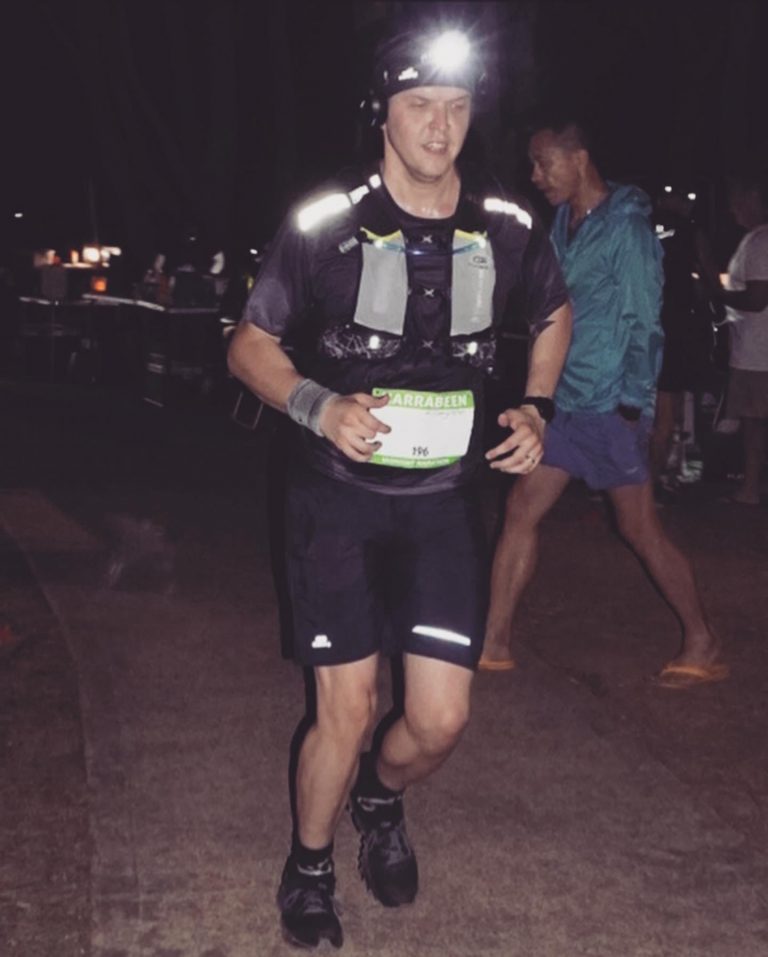
Marko Rakic is a trail runner and fitness enthusiast from Sydney, Australia. He is the lead writer for The Ultimate Primate and believes the best way to live a happy life is through constantly challenging yourself.
